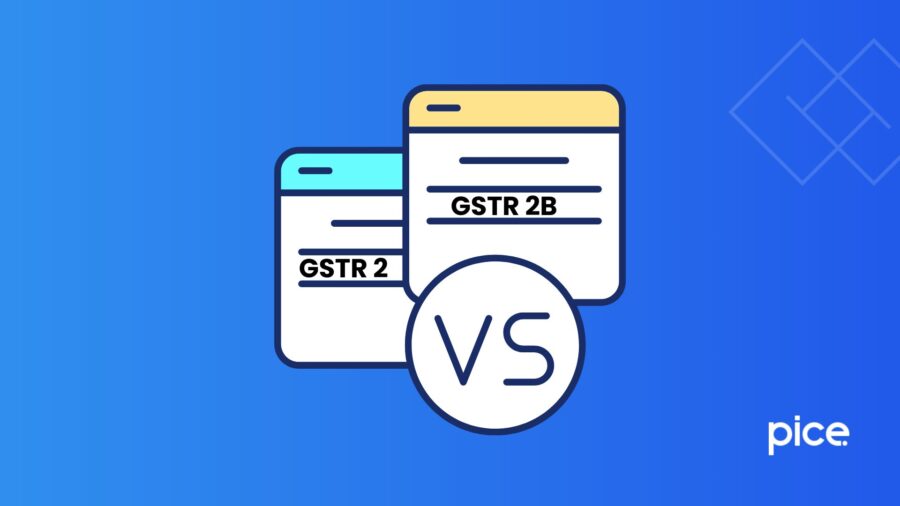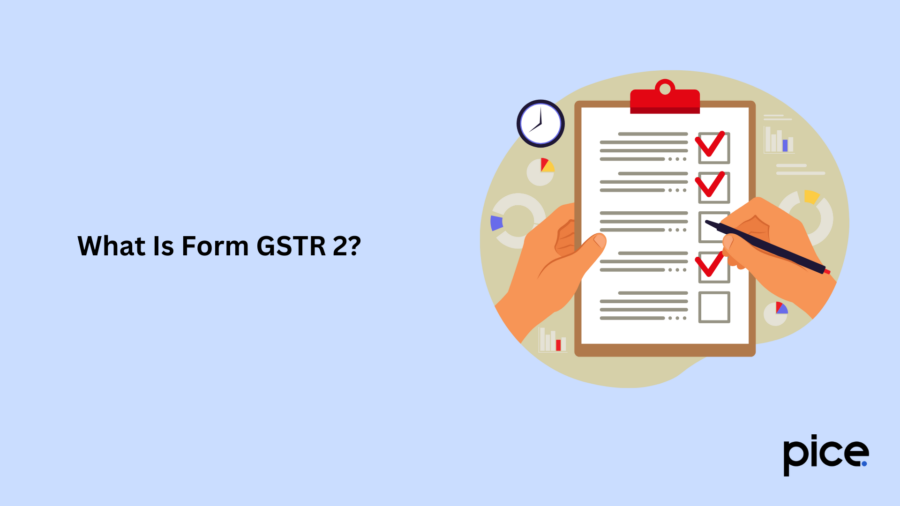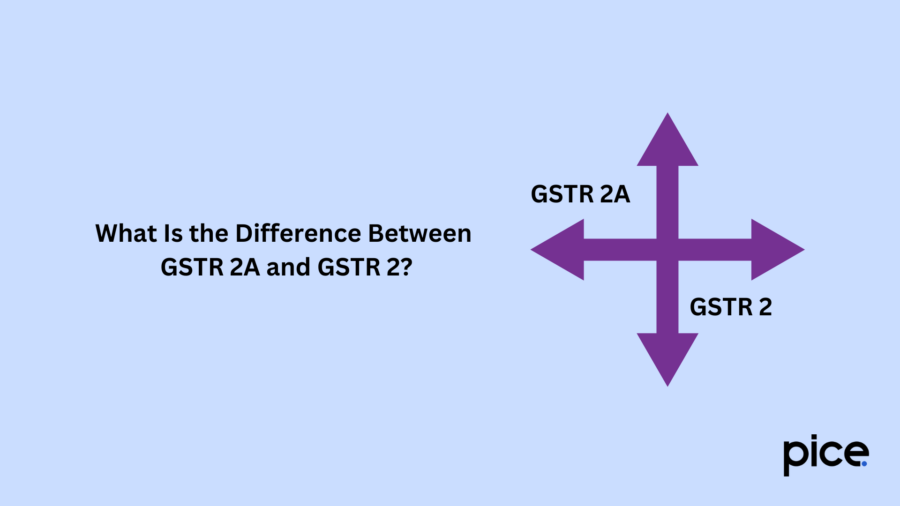Explore the Key Difference Between GSTR 2 and 2A
- 4 Feb 25
- 7 mins

Explore the Key Difference Between GSTR 2 and 2A
Key Takeaways
- GSTR 2A is an auto-generated statement for verifying input tax credit (ITC).
- GSTR 2 was a manually editable return for reporting inward supplies but is now suspended.
- GSTR 2A helps in ITC reconciliation by reflecting suppliers' reported data.
- GSTR 2A ensures transparency and simplifies GST compliance for businesses.
- With GSTR 2 suspended, businesses rely on GSTR 2A for ITC validation and tax filings.
The implementation of the Goods and Services Tax (GST) brought a huge change in India’s tax structure which makes use of a centralised system. For compliance, it is mandatory for any eligible taxpayers to submit GST returns and specify taxable activity conducted within a particular tax period.
Of all these forms, GSTR 2 and GSTR 2A are twin forms, although they serve different roles. Being aware of the difference between GSTR 2 and GSTR 2A is crucial, as GSTR 2A is an auto-generated statement, while GSTR 2 was designed for manual filing and editing of inward supply details.
What Is Form GSTR 2?

A GSTR 2 form is used to record purchase transactions in detail. It is a vital form to ensure GST compliance and financial tracking of tax. Appropriate management of such forms affects a company’s balance sheet and its capacity to secure more capital.
Managing these tax obligations effectively can improve a business’s creditworthiness, enhancing its chances of securing loans. Proper and precise records of compliance, like GSTR-2, can give confidence to the lenders regarding the financial credibility of a business and hence, may lead to better loan terms for the business.
What Is Form GSTR 2A?
GSTR 2A is an auto-generated, purchase-related tax statement available for businesses registered under GST. This dynamic return is created by the GST portal using data from suppliers’ filings, such as GSTR-1, GSTR-5, GSTR-6, GSTR-7, and GSTR-8. It records the details of goods and services purchased during a specific month.
When a seller files their GSTR-1, the data is automatically reflected in the buyer's GSTR 2A. GST-registered buyers use this return to cross-check input tax credit (ITC) information while preparing GSTR-3B and GSTR-9. However, since August 2020, taxpayers have been advised to refer to GSTR 2B, a static version of GSTR 2A, for filing a GSTR-3B return.
The GSTR 2A statement is auto-populated using data from the following returns filed by suppliers or counterparties:
GSTR-1 - Regular registered suppliers
GSTR-5 - Non-resident taxpayers
GSTR-6 - Input Service Distributors
GSTR-7 - Individuals responsible for TDS deductions
GSTR-8 - E-commerce operators
Relevance of GSTR 2A with GSTR 2
GSTR 2A is an automatic return created for you that displays details of purchases made by a taxpayer. It helps identify the input tax credit (ITC) available for claiming. This statement is based on data submitted by suppliers in their GSTR 1 returns.
On the other hand, GSTR 2 was a proposed GST return intended for taxpayers to report their inward supplies and claim eligible ITC. However, the government suspended its implementation, and filing GSTR 2 is no longer required.
The relationship between GSTR 2A and GSTR 2 forms is as follows:
- ITC Reconciliation
GSTR 2A is a useful resource for taxpayers to reconcile and validate their ITC claims, a function initially intended for GSTR 2.
- Ensuring Transparency
GSTR 2A promotes transparency by auto-filling information from suppliers' GSTR 1 filings. This simplifies the process of matching ITC claims.
- Effect of GSTR 2 Suspension
With GSTR 2 no longer in use, taxpayers rely on GSTR 2A to verify ITC claims and address any discrepancies while filing GSTR-3B.
What Is the Difference Between GSTR 2A and GSTR 2?

GSTR 2A and GSTR 2 are closely linked GST returns but serve different purposes. GSTR 2A simplifies the process of filing GSTR 2 by providing pre-filled details. It pre-fills details concerning outward supplies mentioned in your suppliers’ GST returns, which you need to use when filing your GSTR 2.
On the other hand, GSTR 2 is basically an electronic form that is editable and is equivalent to GSTR 2A. It enables the taxpayers to check, alter, or even modify such information pre-filled in GSTR 2A, as well as include any extra supplies—such as invoices in the case of inward supplies. However, GSTR 2A, unlike GSTR 2, does not require any manual input; it provides flexibility for reporting accurately.
The GSTR 2A form contains all the inward supply invoices that have been uploaded by suppliers; the details that have been uploaded here can be previewed, edited, or deleted before finalizing the GSTR 2. Information submitted in GSTR 2 is critical because your ITC claims rely on how accurate the data is.
Can I Correct My Seller's Mistake in GSTR 2A?
You can rectify errors made by your seller while filing GSTR 2 by using the information provided in GSTR 2A.
What Am I Required to Do in GSTR 2A?
You are only required to review the details uploaded by registered suppliers in GSTR 2A.
What Am I Required to Do in GSTR 2?
As a recipient taxpayer, you can take one of four actions for each supplier's invoice: accept, modify, reject, or mark it as pending.
What If the GSTR 2 Return Is Not Filed?
Failing to file GSTR 2 returns along with invoices on time carried serious consequences under the GST framework, underscoring the importance of timely compliance. Here is what businesses face if they miss filing this crucial return:
- Loss of Input Tax Credit (ITC): Without filing GSTR 2, businesses could not verify their input tax credits, resulting in missed opportunities to offset taxes. This could lead to significant financial setbacks.
- Late Fees and Penalties: Non-compliance attracted late fees and penalties, which could create additional financial burdens for the business.
- Negative Impact on Compliance Rating: Consistent delays or failure to file returns on GSTR 2 harmed a business's compliance rating. Lower ratings meant the tax authorities tended to pay more attention to the company and thus increased the risk of audits. These consequences highlighted the need for GSTR 2 in making and keeping GST compliance as well as a business’s financial accountability.
While GSTR 2A is a statement that is auto-generated for the purpose of verification of ITC, GSTR 2 was used for modification and finalization of the supplies received.
Conclusion
Knowing the difference between GSTR 2 and GSTR 2A is essential for ensuring accurate GST compliance. While GSTR 2A serves as an auto-generated statement for validating input tax credit (ITC), GSTR 2 allows taxpayers to edit and finalise their inward supply details.
Although GSTR 2 has been suspended, GSTR 2A holds the essence for checking persistency and ITC reconciliation on monthly and yearly tax return filings. Correct management of these forms enhances a business entity’s financial discipline and compliance character.
💡If you want to streamline your payment and make GST payments, consider using the PICE App. Explore the PICE App today and take your business to new heights.
 By
By 
















